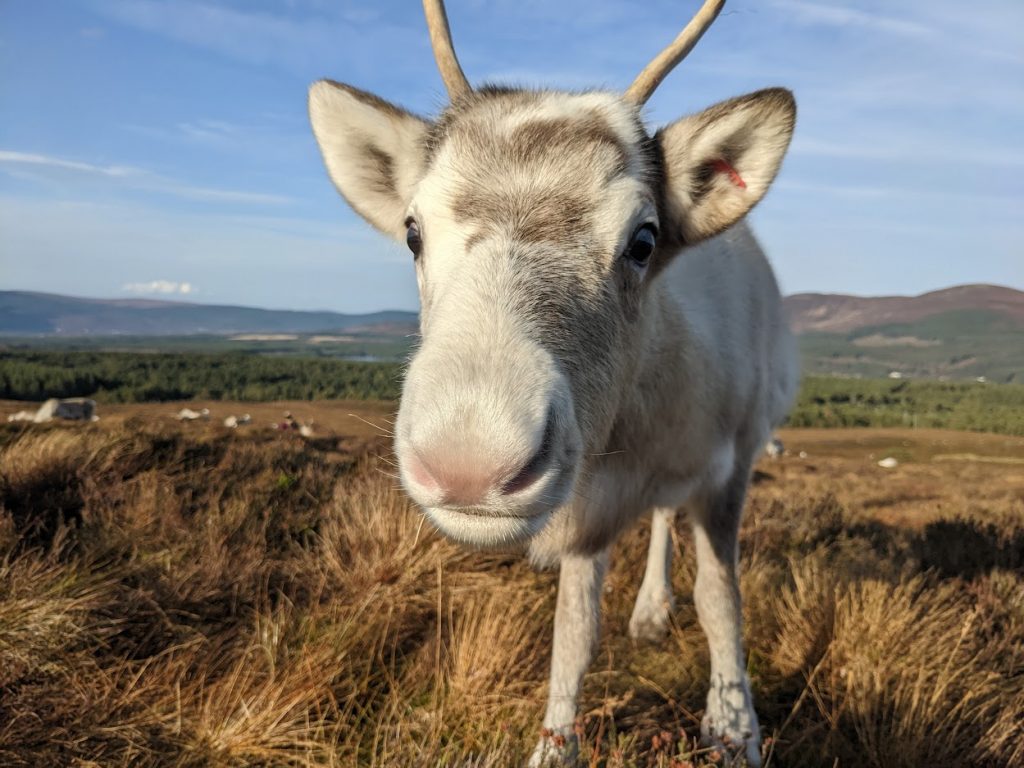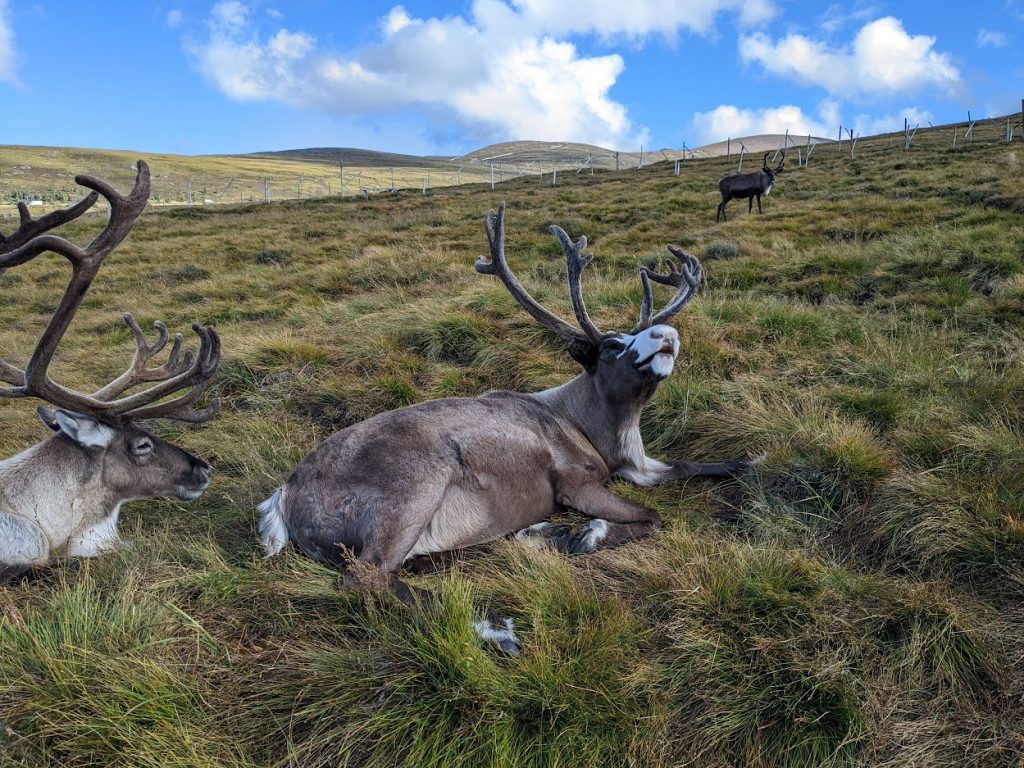It’s the post-Christmas crash. The time of year where most people have completely de-railed from their usual eating habits and are feeling overwhelmed by how much food has been consumed in such a short space of time. Bodies are working at their very best to digest food as quickly as it has been eaten and to be honest with ourselves, not too much will change before the New Year. For some of our reindeer in the herd this food coma state happens all too often and not just around the festive season. We as herders have come together to create an official Top 5 list announcing the greediest reindeer in our herd for 2022. For those of you who know our reindeer well this may not come as a surprise. We created a short list of 10 reindeer before putting it to a vote to get our finalists. Without further ado starting from 5th place, we have…
Joint 5th – Pagan
Just squeezing her way into the top 5, Pagan isn’t a reindeer who is particularly pushy when it comes to food, but she will seize any opportunity that comes her way and is usually always the first reindeer to come down the hill and meet us in the morning. This year we decided to cut off Pagan’s antlers because she is very good at using them on visitors, herders, and other reindeer. With no antlers on her head, she is the master of stealthily getting into the food bags, blending in when we allow the younger calves to eat first. On Hill Trips Pagan loves handfeeding from visitors inhaling the food as quickly as possible. This has been passed on to her 2-year-old daughter Pumpkin who is also very greedy when it comes handfeeding and certainly deserves a mention.



Joint 5th – Magnum
Magnum is probably our largest calf this year and already has a ferocious appetite. He spent the first 3-4 months of his life free ranging before coming into out hill enclosure for the rest of the year and instantly became obsessed with food. When we feed the calves, he will bully his way into a bag and keep his head in there for as long as possible. He’s also devised a way of making holes in the bags so he can steal food when they are closed. We do like him as herders, but he is a real handful and a pest when we are trying to feed the reindeer. At only 7 months old, I worry just how greedy this cheeky chappy will become!


4th – Scully
The apple didn’t fall far when it comes to Scully. Taking after her mother Screel, she has a real appetite for food and has spent almost the whole year free ranging. It’s testament to how good the grazing is for our reindeer on the open hillside as Scully is now officially the fattest reindeer in our herd after a recent condition score on all the reindeer. Even at 4 years old Scully still feels she has the right to put her head into a bag of feed like our calves and I don’t see that habit changing anytime soon. She’s a nice reindeer with the body of a sumo wrestler!

3rd – Kipling
Kipling is a one in a million, this is very biased because she is my favourite reindeer. For the last 3 – 4 years she has been exceptionally greedy and will always be the first reindeer waiting to handfeed from visitors, where she will try her very best to feed from every single person. When Kipling had her first calf Pip, Kipling would happily leave her for the chance of a quick feed even if her calf got lost in the process, we would constantly have to remind her that she was a mother a food wasn’t everything in the world. I’ve seen her so full of food in recent months that she acts and looks ill. Unfortunately, some other herders have become a little less patient with her is recent times, trying to get the attention of other reindeer is now an almost impossible job when Kipling is around as she won’t leave you alone if there is a bag of food in your hand.


2nd – Dr Seuss
Anyone who knows the reindeer herd particularly well might be surprised that Dr Seuss is not first in our 2022 list of greed. If he was a human you would probably class him as morbidly obese however fat reserves are very important for a reindeer to see them through the harsh winter months, even if he does have some to spare. Dr Seuss has been a greedy lad from birth and absolutely loves his food. He can be a bit of a bully when it comes to food sometimes, but he never tends to be that bad. Like Kipling, he tries his very best to consume as much hand feed as physically possible when meeting visitors and will happily plough his way through a group of people when he see’s food from a far. The problem is that because he is so big and determined, if he ever manages to get his head in a bag of feed it extremely difficult to get him out again. With Dr Seuss in second place its time to announce the winner….


1st – Aztec
Coming in first place for nearly every reindeer herder, Aztec is officially the greediest reindeer of 2022. He’s a fun and energetic reindeer who acts like food is the only thing on his mind. You may not see him on Hill Trips very much because he is sometimes banned for his bad behaviour and greed when it comes to handfeeding, he’s exceptionally pushy and forceful you could be lead in to thinking that he never gets enough food. Aztec is also very athletic and uses this to his advantage when it come to greed, he will happily jump over a fence or display pen if he sees a bag of lichen and at the front of sleigh once dragged all remaining reindeer and herders into a pen when he saw the food bowls. I suspect Aztec’s greed comes from his mother Gazelle who is also known to be very vigorous at times when it comes to food. For this year he is the winner, but I can’t decide what to give him a prize, surely not more food?


Joe












